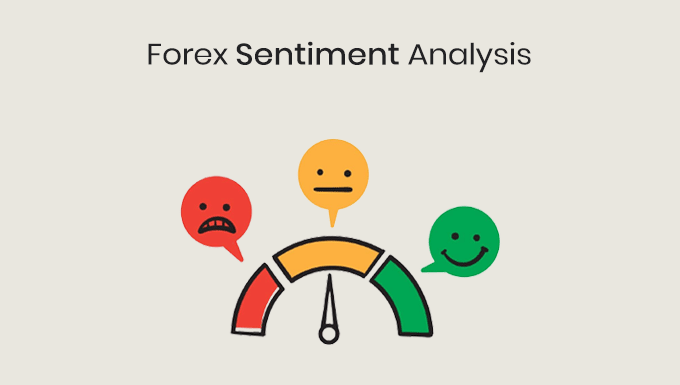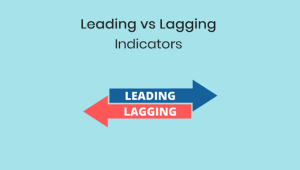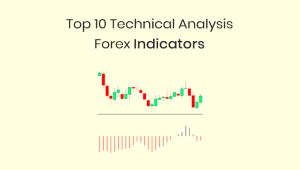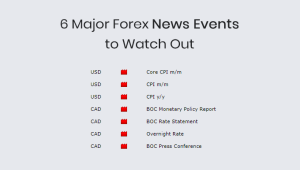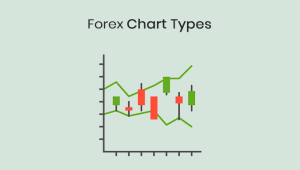Forex sentiment analysis acts as a powerful compass, guiding traders to measure the behavior of the market. By understanding the collective mindset of market participants towards specific currencies or events, traders can gain insights into potential price movements. From the fundamental concepts to the advanced tools of the trade, this article looks into different aspects of sentiment analysis in forex, explaining its significance, applications, and future prospects.
Table of Contents
• Importance of Sentiment Analysis in Forex Trading
• How Do You Analyse Forex Sentiment?
• What is the Best Sentiment Analysis for Forex?
• How Sentiment Analysis Impact Forex Market
• Common Drawbacks in Sentiment Analysis
• Examples of Sentiment Analysis in Forex
• Conclusion
• FAQs
What is Forex Sentiment Analysis?
Forex sentiment analysis is an approach that tries to gauge the mood or sentiment of market participants towards a particular currency or currency pair. This sentiment, be it bullish or bearish, can provide valuable insights into potential future price movements.
Unlike traditional technical analysis or fundamental analysis, which looks at past data or economic indicators, sentiment analysis focuses on the collective mindset of traders. For instance, if the majority of traders are bullish on the USD/EUR currency pair, this sentiment might drive the pair’s value upward.
Different factors influence trader sentiment, including economic news, geopolitical events, and even other traders’ behaviors. Because the Forex market is decentralized and comprises a vast number of participants globally, gauging overall sentiment can be complex.
However, with the advent of technology, various tools and platforms can measure and report on the prevailing sentiment in the market. Using these tools, traders can make more informed decisions, potentially increasing their chances of making profitable trades.
Importance of Sentiment Analysis in Forex Trading
In the Forex market, where currency values can shift rapidly in response to global events, understanding sentiment becomes crucial. It offers a different perspective, complementing technical and fundamental analyses.
Sentiment analysis can serve as an early warning system. If a significant number of traders start shifting their positions, it can be a sign of an upcoming trend or reversal. For instance, if there’s a sudden increase in bullish sentiment towards the GBP, it might indicate an impending upward price movement.
Additionally, understanding the market’s sentiment can help traders position themselves better. By going with the majority sentiment, they can potentially ride the wave of the trend. Conversely, contrarian traders might use sentiment analysis to find opportunities when the market sentiment is overwhelmingly one-sided.
Given the highly leveraged nature of Forex trading, even small price movements can lead to significant profits or losses. Hence, having an additional tool like sentiment analysis can provide traders with an edge in this competitive market.
How Do You Analyse Forex Sentiment?
Various tools and techniques are available for traders to gauge the sentiment of the Forex market. Here are some of the most popular ones:
- Commitment of Traders (COT) Report: Published by the Commodity Futures Trading Commission (CFTC), this report provides a breakdown of the market’s open interest, indicating the positions of large traders.
- Forex Sentiment Indicators: Many trading platforms offer sentiment indicators that show the percentage of traders who are long or short a particular currency pair.
- Forex Opinion and Community Polls: Websites and forums where traders discuss their views can also give insights into the prevailing sentiment.
- News and Social Media Analysis: Algorithms and tools that scan news articles, tweets, and other social media platforms such as reddit can provide sentiment scores based on the type of language used.
While these tools and techniques are helpful, it’s essential for traders to combine sentiment analysis with other forms of analysis. Relying solely on sentiment can lead to biased decisions, as the market can remain irrational longer than one can remain solvent.
What is the Best Sentiment Analysis for Forex?
Determining the best sentiment analysis for Forex depends largely on individual trading strategies and goals. However, there are a few key approaches that have consistently shown value.
First and foremost, the Commitment of Traders (COT) Report remains a gold standard. Published weekly by the Commodity Futures Trading Commission (CFTC), it provides a detailed look at the positions of large institutional traders, offering insights into potential future price directions. Traders who understand how to interpret this report can gain a strategic advantage in predicting market moves.
For those who prefer a more traditional approach, Forex sentiment indicators remain invaluable. Available on many trading platforms, these indicators provide a snapshot of how many traders are long or short on a specific currency pair, offering insight into potential price shifts. Most traders use TradingView sentiment indicators to help their analysis.
It’s also worth noting the importance of community-driven sentiment. Forums, chats, and other online communities where traders discuss their positions and predictions can be treasure troves of valuable sentiment information. For example, some traders participate in investing.com chats to discuss their analysis of currency pairs with fellow traders.
How Sentiment Analysis Impact Forex Market
Market sentiment plays a key role in determining the direction of currency price movements. When a majority of traders feel positive about a particular currency, they’re more likely to buy it, pushing its value up. Conversely, if the sentiment is negative, the currency’s value might decline.
For example, during a geopolitical crisis, if the sentiment towards the USD is strong, traders might flock to it as a safe haven, driving its value up. Similarly, positive economic news about the Eurozone might lead to bullish sentiment for the EUR, resulting in its appreciation.
However, sentiment can also be misleading. During times of extreme optimism or pessimism, the market might become oversaturated, leading to sudden reversals. Hence, while sentiment is a powerful driver, it’s also uncertain and can change quickly.
Common Drawbacks in Sentiment Analysis
While sentiment analysis offers valuable insights, it’s not without its challenges. Here are some common drawbacks traders should be aware of:
- Herd Mentality: Just because the majority thinks in a certain way doesn’t mean they’re right. Often, traders get caught up in the prevailing sentiment, leading to bubbles or crashes.
- Over-reliance: Relying solely on sentiment analysis without considering technical or fundamental factors can be a recipe for disaster.
- Misinterpreting Data: Not all sentiment analysis tools are created equal. Some might provide skewed or outdated data, leading to incorrect interpretations.
- Changing Sentiment: The mood of the market can change rapidly, especially in response to unforeseen events. Traders need to be agile and adapt to shifting sentiments.
Examples of Sentiment Analysis in Forex
Forex sentiment analysis has played a crucial role in various historical market events.
- Brexit Vote (2016): Leading up to the Brexit referendum, the prevailing sentiment was that the UK would remain in the EU. As the vote neared, an increase in short positions against the British pound suggested a growing belief that Brexit might indeed happen. When the results confirmed a ‘Leave’ vote, the GBP plummeted, rewarding those who trusted the sentiment data.
- U.S. Presidential Election (2016): During the 2016 U.S. Presidential election, the general sentiment leaned towards a win for Hillary Clinton. However, as real-time results started to come in and hinted at a potential Trump victory, a swift shift in sentiment caused the USD to initially drop before seeing a significant rally in the subsequent days.
- COVID-19 Pandemic (2020): The onset of the COVID-19 pandemic saw an overwhelming bearish sentiment engulf the markets. Real-time sentiment tools, tracking news feeds and social media, picked up on growing concerns about global economic downturns. This sentiment was reflected in the Forex market as traders moved towards safe-haven currencies like the U.S. dollar and Japanese yen.
- European Central Bank (ECB) Announcements: Over the years, sentiment analysis tools have caught abrupt shifts in trader sentiment during ECB’s monetary policy announcements. For instance, when the ECB has hinted at more dovish policies or potential quantitative easing, real-time sentiment indicators often detect a bearish sentiment towards the euro before any significant price movement.
- Trade War Concerns (2018-2019): The U.S.-China trade war saga had sentiment indicators working overtime. As both nations exchanged tariff threats, sentiment analysis captured waves of bullish and bearish sentiment towards the USD and CNY, respectively. These shifts often preceded actual policy announcements, suggesting that sentiment data was picking up on insider feelings and speculations.
These examples underline the importance of sentiment analysis as not just a reactionary tool, but also a predictive one, helping traders anticipate market movements based on collective feelings and attitudes.
Conclusion
The Forex market is, without a doubt, influenced by the collective sentiment of its participants. As the Forex market continues to evolve, so does the technology and methods for sentiment analysis. By understanding the underlying sentiments driving market movements, traders can position themselves more strategically, capitalizing on opportunities and mitigating risks. Forex sentiment analysis fills this gap by offering real-time insights and the capacity for future prediction, giving traders more assurance in their ability to handle the complexities of the market. By integrating sentiment analysis into their trading plan, staying updated with the latest tools, and continuously refining their strategies, traders can not only lower their risks but also maximize profitability.
FAQs
1. How do geopolitical events impact sentiment in the Forex market?
Geopolitical events, such as wars, elections, and diplomatic tensions, can have a profound effect on the sentiment in the Forex market. These events can introduce uncertainty, leading traders to shift their positions and driving volatility in currency values.
2. Can beginner traders benefit from sentiment analysis?
Yes, beginner traders can benefit from sentiment analysis. While the concept might seem advanced, several tools and platforms simplify the process. Even a basic understanding of market sentiment can offer insights that might not be evident from traditional analysis alone.
3. Are there any specific Forex pairs more susceptible to sentiment shifts?
Certain pairs, especially major pairs like EUR/USD or GBP/USD, can be more sensitive to sentiment shifts due to their prominence in the market. However, sentiment can affect any pair, especially if there are significant regional or global events impacting the respective countries.
4. How do central bank announcements influence Forex sentiment?
Central bank announcements, such as interest rate changes or monetary policy shifts, play a significant role in shaping Forex sentiment. For instance, a surprise rate hike can lead to bullish sentiment for the currency, as higher interest rates typically offer better returns on investments held in that currency.
5. Can I use sentiment analysis in conjunction with automated trading bots?
Absolutely. Many modern automated trading bots or algorithms allow for the integration of sentiment indicators. This enables the bot to consider market sentiment in its trading strategy, potentially leading to more informed trade decisions.
